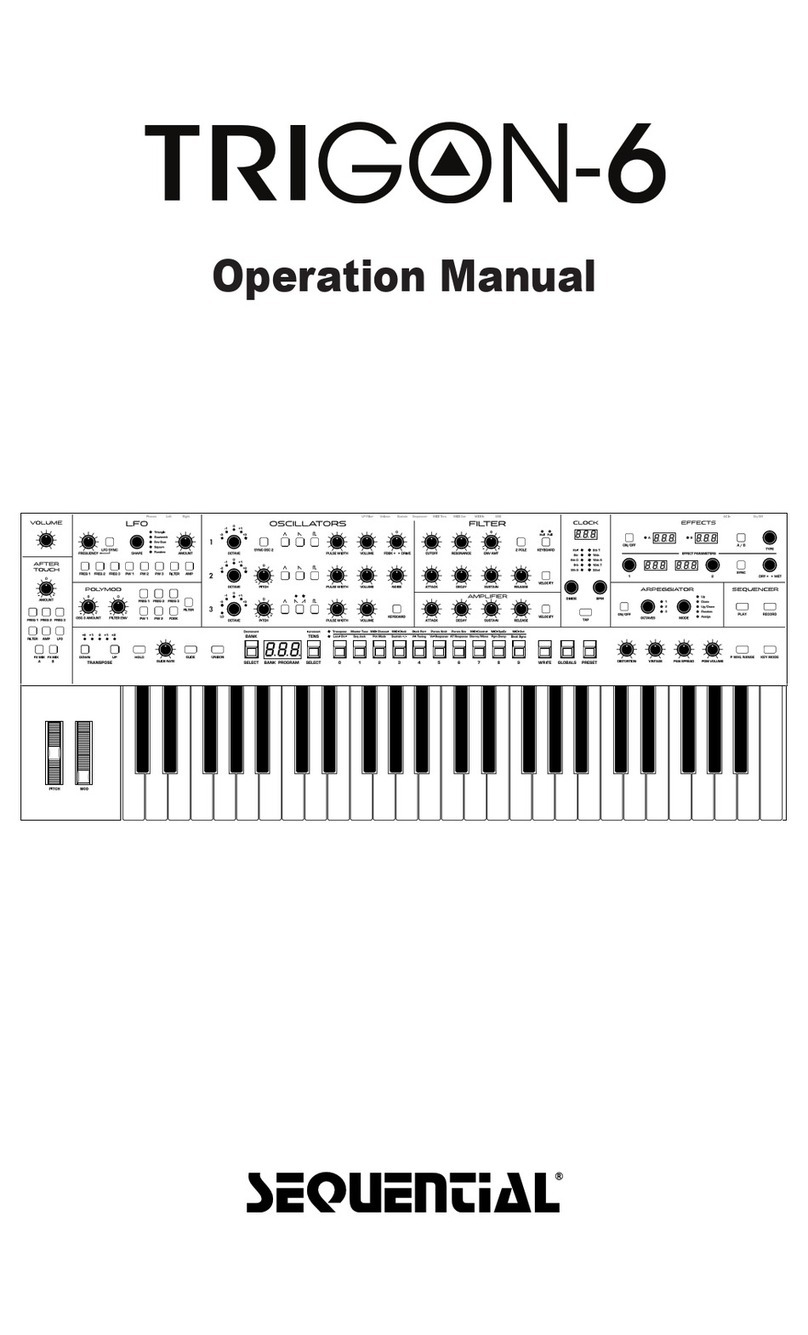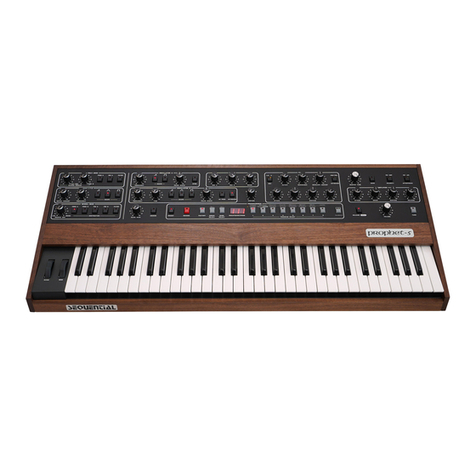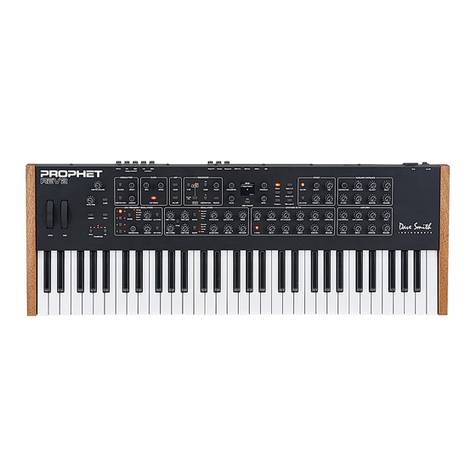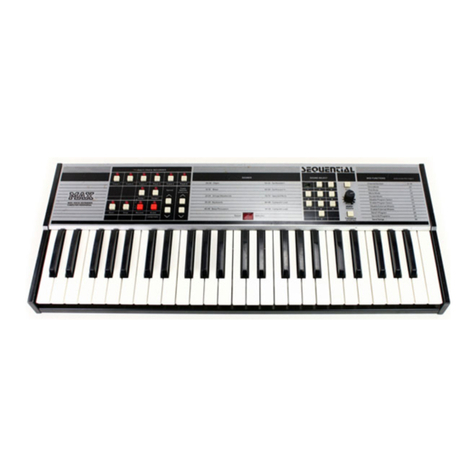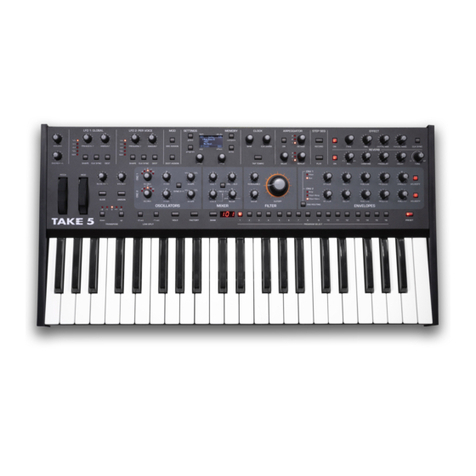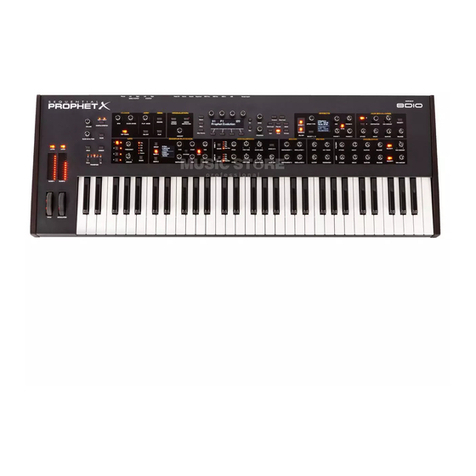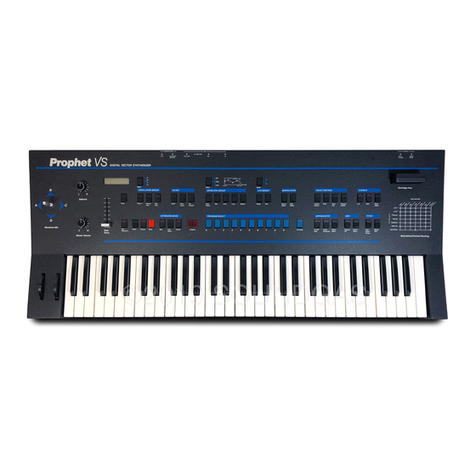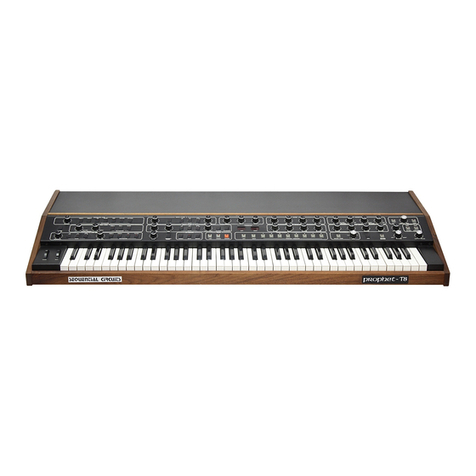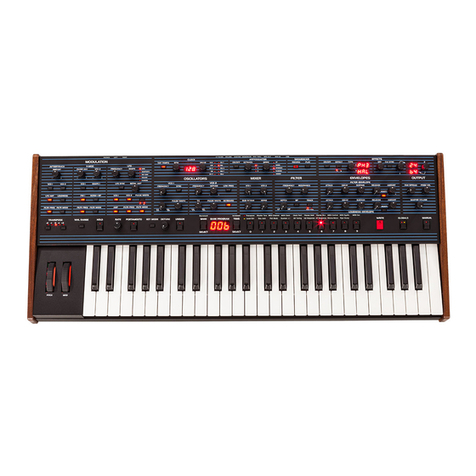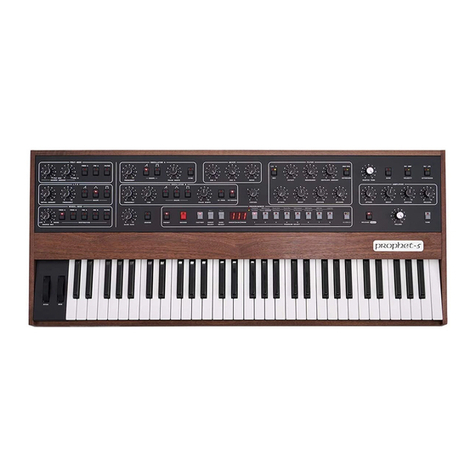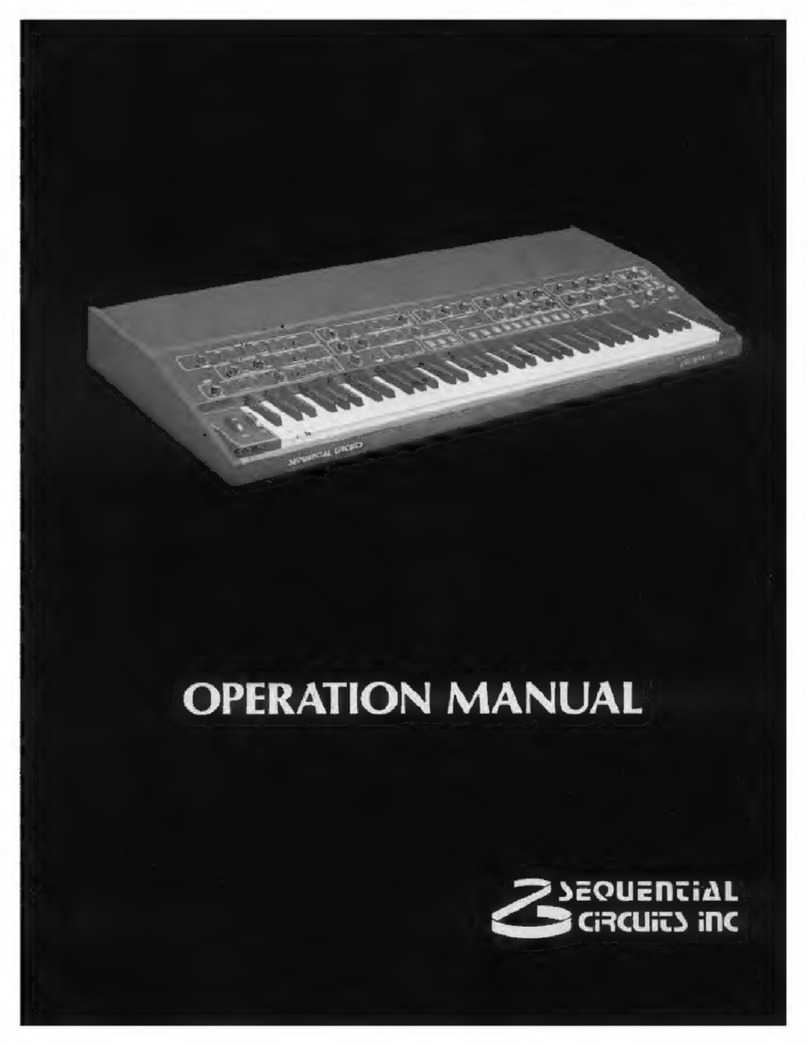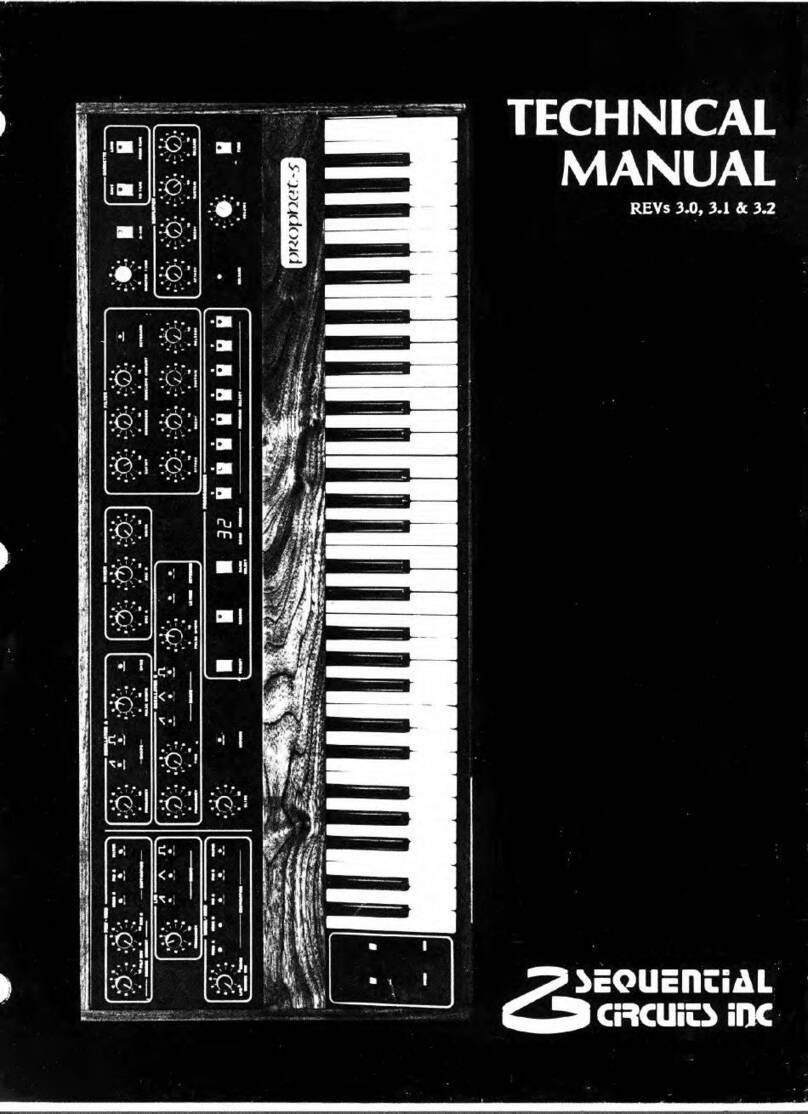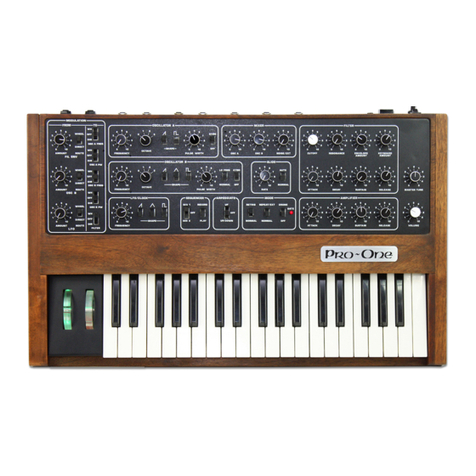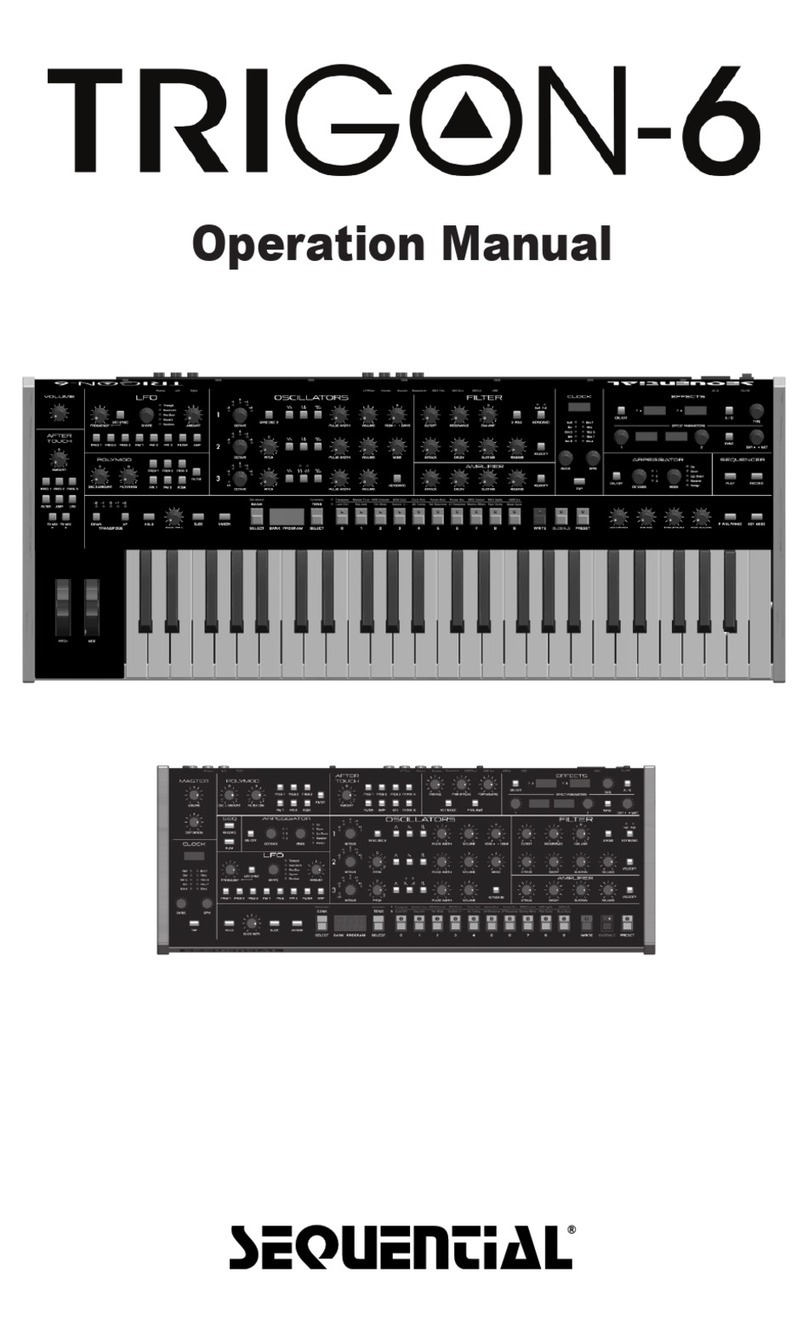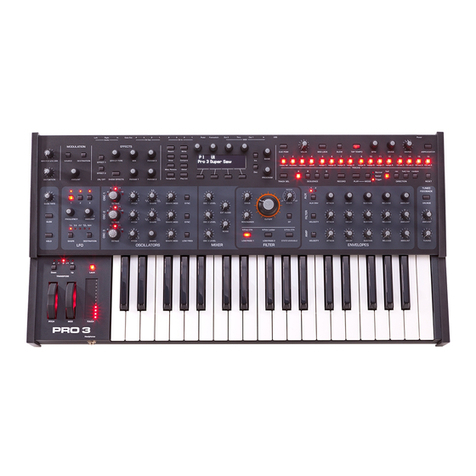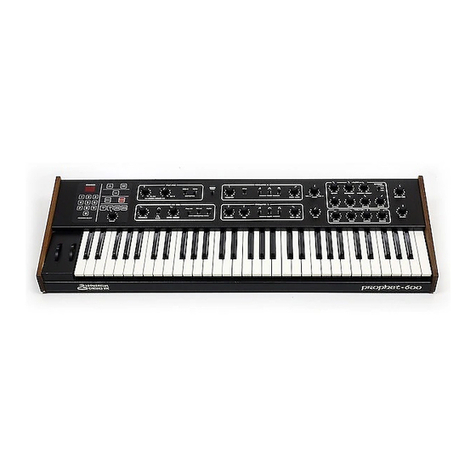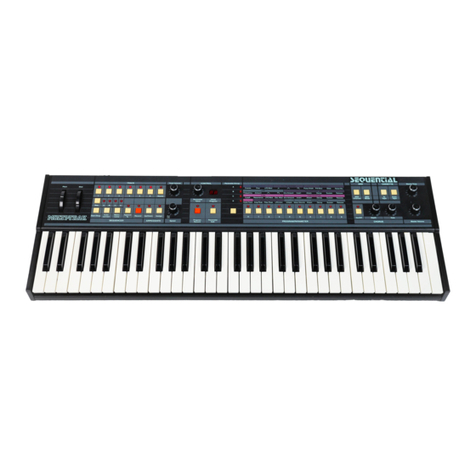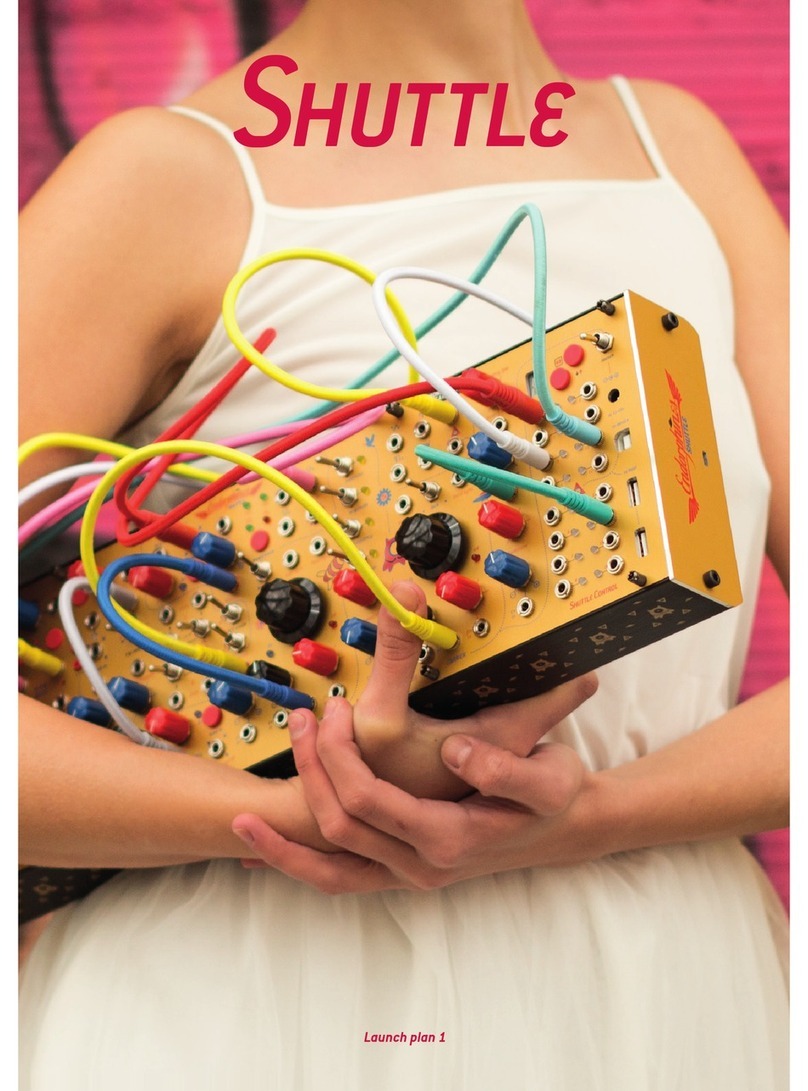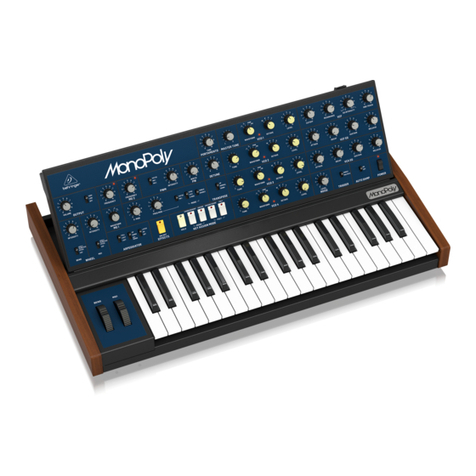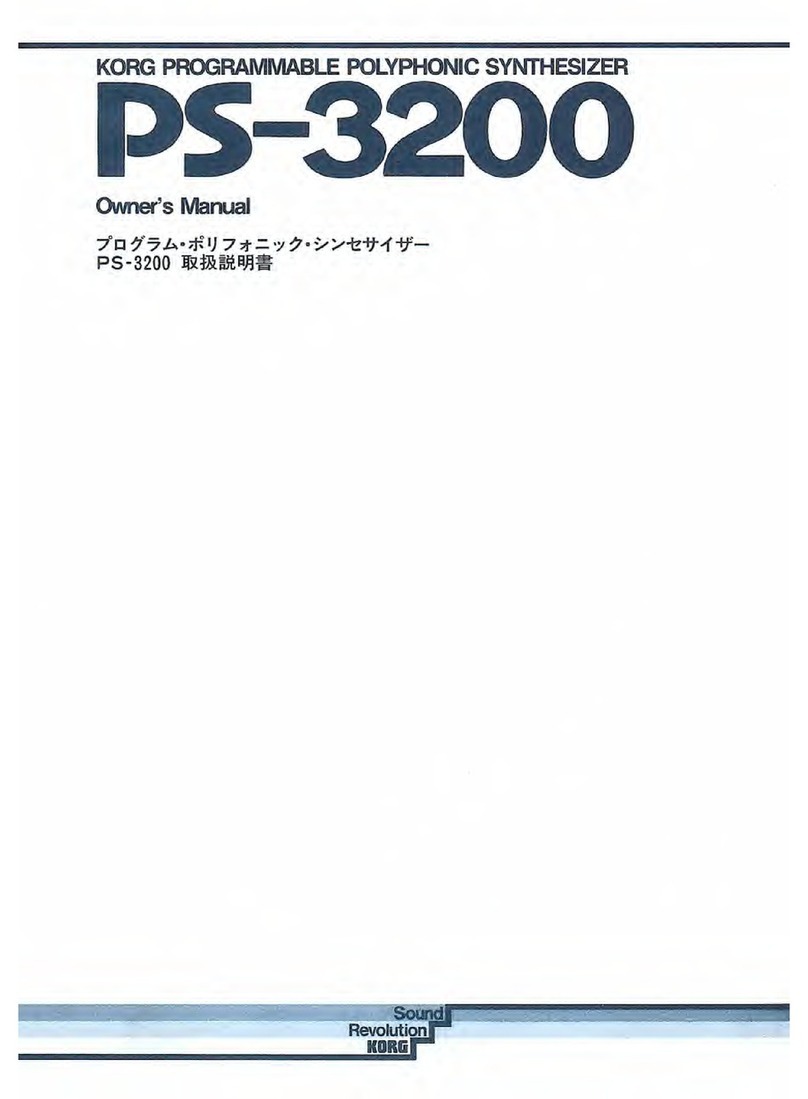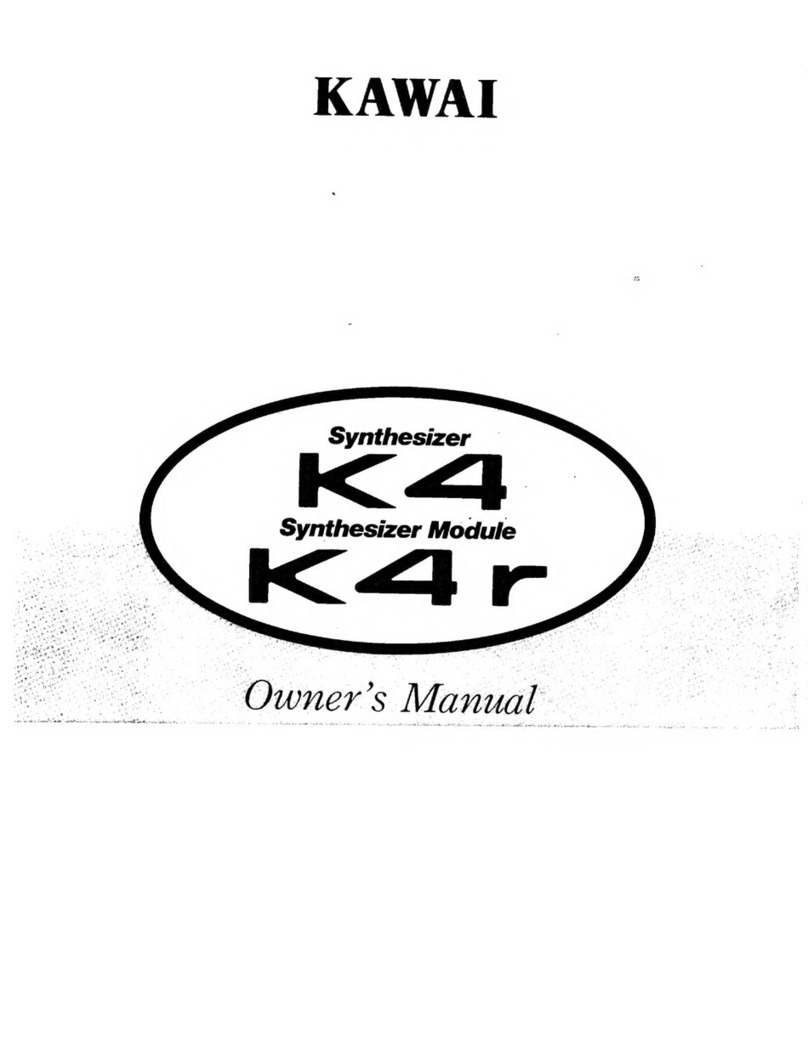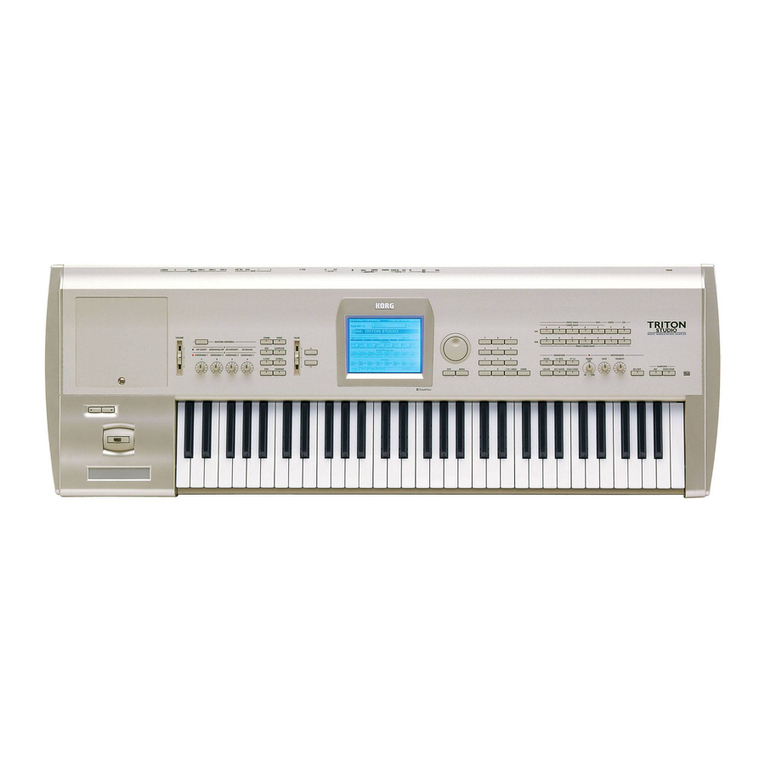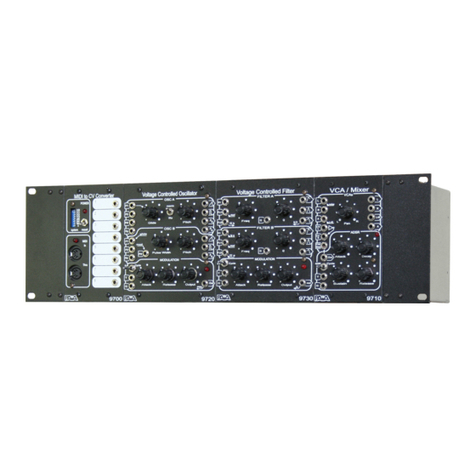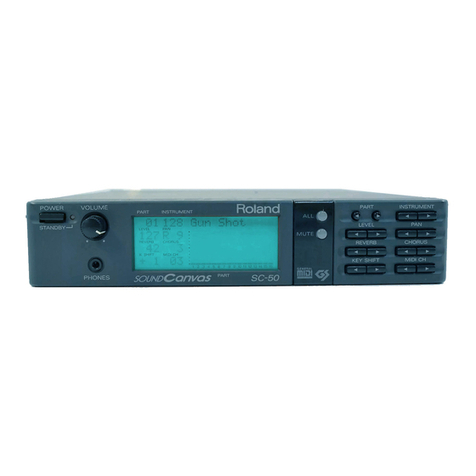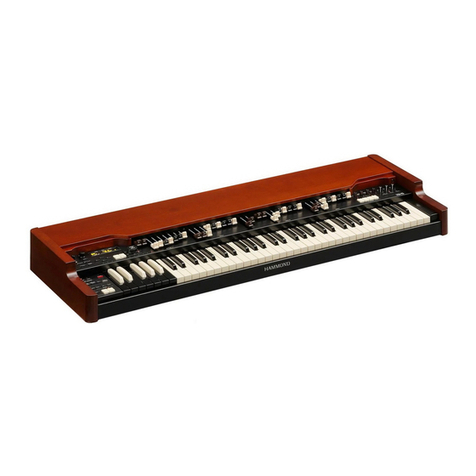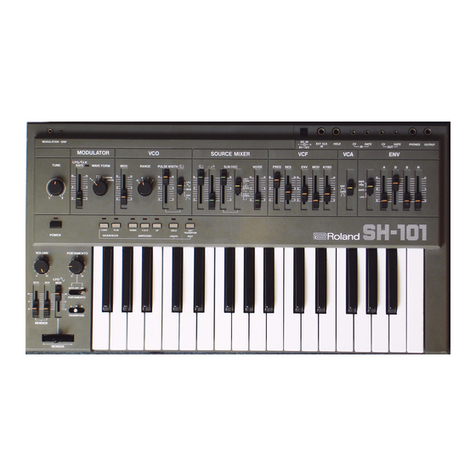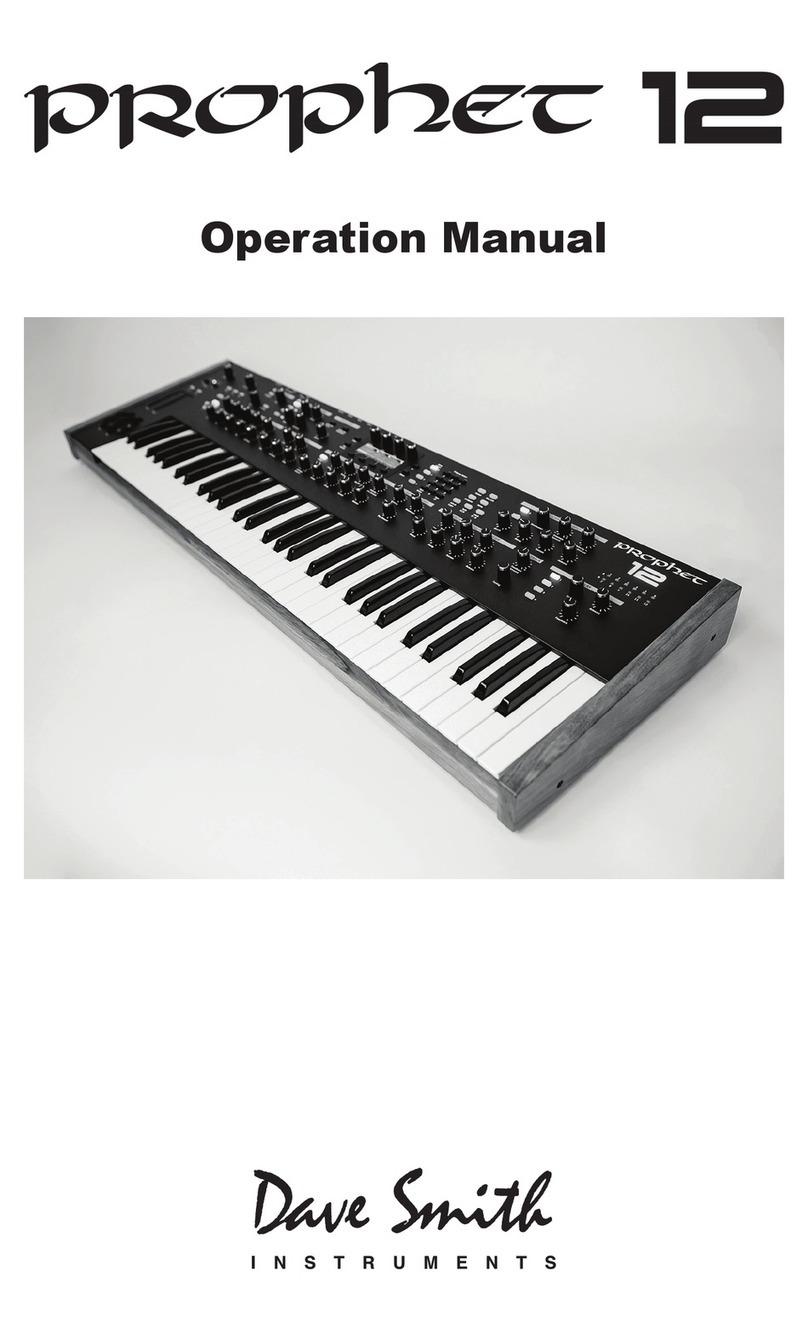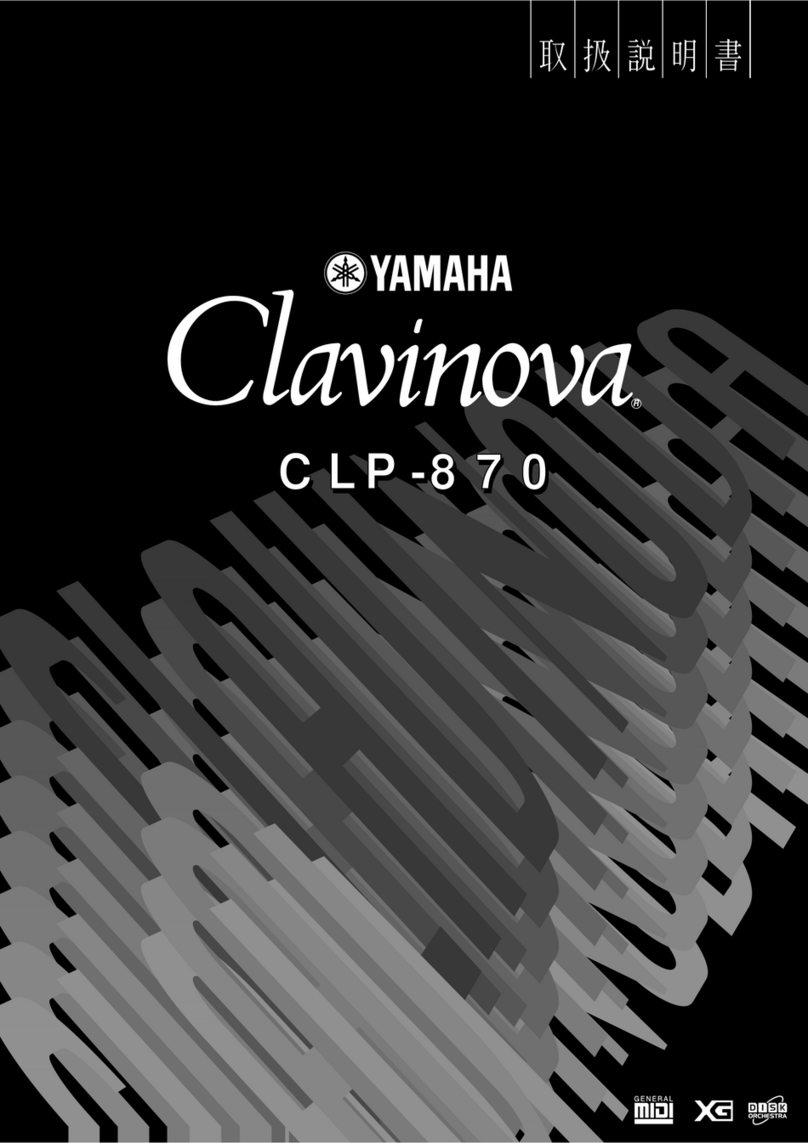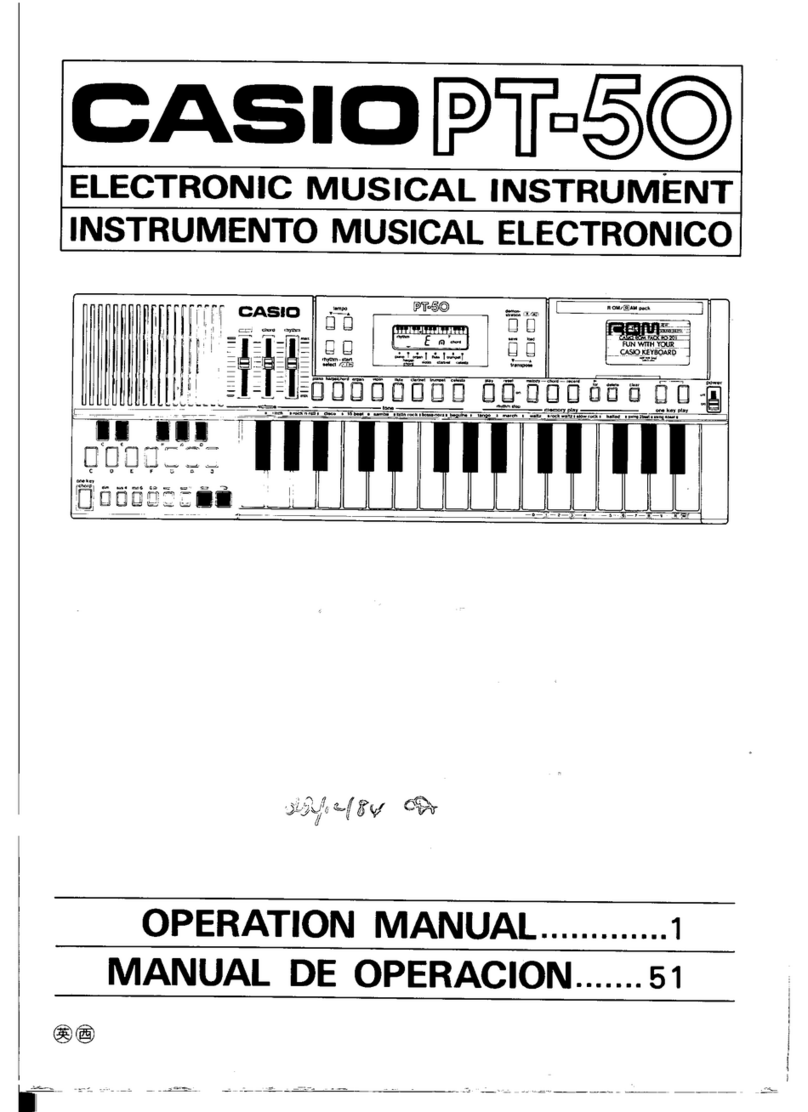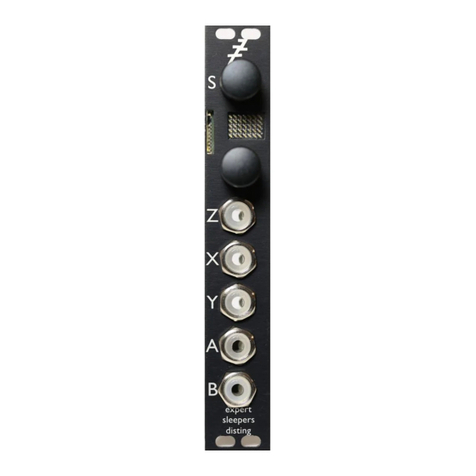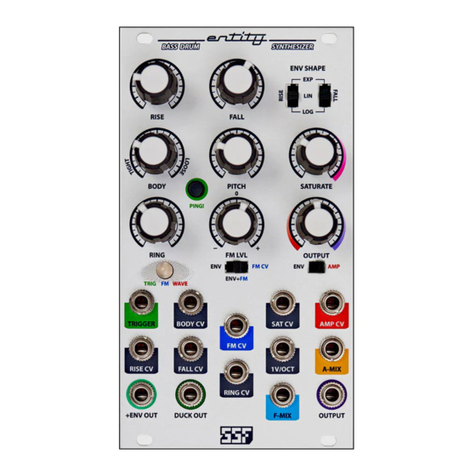The silver knobs (MASTER TUNE and VOLUME) and grey switches (PROGRAMMER,
TUNE, A-440, SAVE TO TAPE and LOAD FROM TAPE) are not programmable. The
PITCH and MOD wheels are also not programmable. (The RECORD switch is orange so
it can easily be distinguished.)
All of the switches except BANK SELECT have LED indicators embedded in them.
And, except for the eight PROGRAM SELECTS, SAVE TO TAPE, LOAD FROM TAPE
and TUNE, all LED switches are alternate action: one push turns them on, the next
push turns them off. For example, the PRESET switch LED when lit indicates PRESET
Mode. When the Prophet is switched to MANUAL Mode by pushing the (lit) PRESET
switch, the LED goes off.
In MANUAL Mode the control panel always indicates the status of the patch under
construction. You can see exactly what signal paths are closed by (lit) switches. The
knob settings reflect their actual values. Note that in PRESET Mode as you select
different programs, the switch LEDs indicate how the switches are programmed. But
there is no way for the knobs to move themselves—they just stay where they were last
set. So, in PRESET Mode the knobs do not normally indicate their "current" setting.
However as soon as you move aknob to EDIT aprogram, that knob converts to
MANUAL operation. So only the knobs you move will actually indicate their current
setting: the parameters controlled by unmoved knobs do not change.
For example, suppose you like program 3-3 but want to change OSC Apitch and prefer
abrighter tone. In PRESET Mode, select BANK 3-PROGRAM 3, adjust OSC A
FREQUENCY to the desired pitch and increase the FILTER CUTOFF to the desired
brightness. You can cancel any changes and return to the original program by hitting
PROGRAM SELECT 3. If you want to permanently program location 3-3 to your edited
version, record it in 3-3. Or, if both the original and the edited version are wanted,
record the edited program in anew location (that is, alocation with an undesired
program).
For afurther discussion of recording and relocating programs, see the notes following
programs 5-7 and 5-8, in Section 8.
2-2 VOICE SIGNAL FLOW
The Prophet's audio output results from several stages of signal generation, combina-
tion, and modification. The front panel is divided into VOICE and MODULATION
sections. MODULATION controls are covered in paragraph 2-9. It should be kept in
mind that while only one voice is depicted on the panel, the voice controls patch five
voices in parallel. Figure 2-0 diagrams signal flow in asingle voice. Basically, the
MIXER sets OSCILLATOR (VCO) A, B, and NOISE levels sent to the FILTER (VCF) and
AMPLIFIER (VCA) where, roughly speaking, the timbre and dynamics are shaped.
Finally the voices are combined and the overall level set by the VOLUME control.
Each voice module is detailed in paragraphs 2-3 through 2-7.
2-2 CMIOOOD 2/82




















